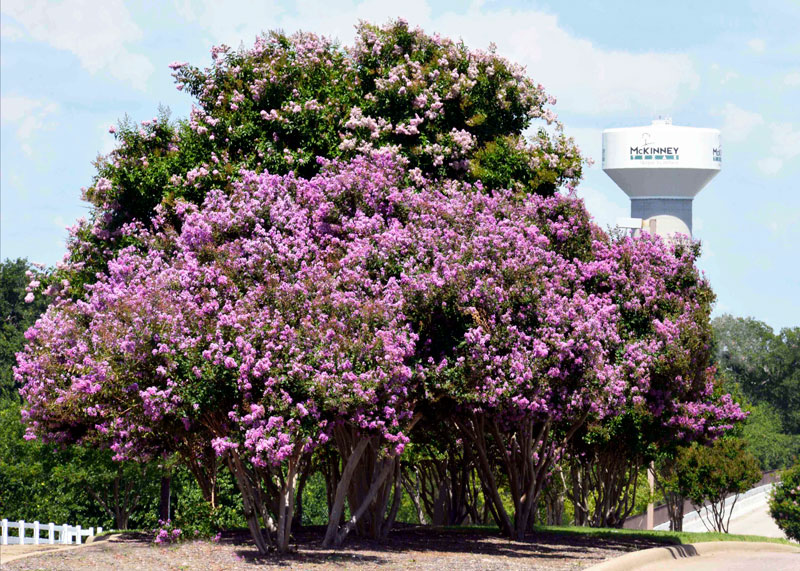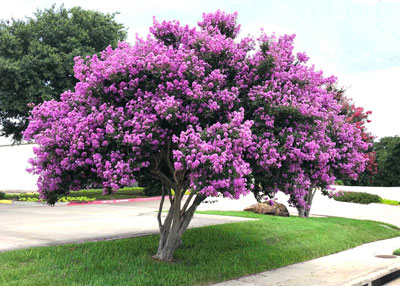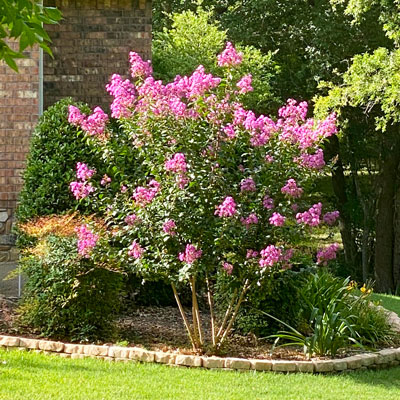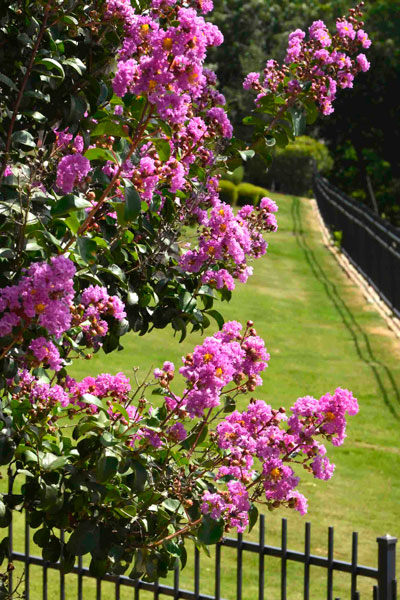Queen of the Crape Myrtles

This is proving to be a great year for crape myrtles. At least that’s true in North Central Texas, specifically in McKinney, home of The Crape Myrtle Trails of McKinney and identified by the U.S. Congress as America’s Crape Myrtle City in 2014.

Since 1999 our Crape Myrtle Trails Foundation along with the city of McKinney and the McKinney Independent School District have all been involved with the planting of upwards of 50,000 crape myrtles in our city.

I’ve spent a lot of time observing those crape myrtles, and I’ve come to many conclusions. I’ll cover other topics at other times. For now I’m going to leave it at my favorite color and my favorite variety.
Purple crape myrtles combine best with all other colors, whether we’re talking about other crape myrtles or with bricks, stone or painted trim. Purple crape myrtles simply fit in very well.

By comparison, red crape myrtles don’t always play well with others, and there can be a fine line between pinks and lavenders – enough so that they can look restless when grown together. But the purples always seem to get along.

And my favorite purple is the variety Catawba. It’s certainly not new. It was introduced by Dr. Don Egolf from the United States National Arboretum in 1967. He went on to introduce almost 30 more varieties of mildew-resistant crape myrtles, all carrying Indian tribal names like Natchez, Muskogee and Tuscarora, among many others.


Catawba is mannerly. It grows to 15 to 18 feet tall and wide, so it’s perfect for almost any size of lot. It has a full and rounded habit of growth.
Catawba blooms 3 or 4 times every summer as long as it isn’t topped. Its fall color is often very nice, and its trunks are a handsome gray shade.

Your local independent retail garden center will be familiar with the crape myrtle variety Catawba. They’ll either have it or they can get it for you. It’s generally available in several different sizes, but if all you can find is a relatively small plant, go ahead and buy it. They grow fairly quickly.
As with all crape myrtles, space it out from the house by at least 12 or 15 feet. Grow it in well draining soil that you can keep moist at all times and apply a high-nitrogen fertilizer to keep it growing actively. Full sun is a requirement.
